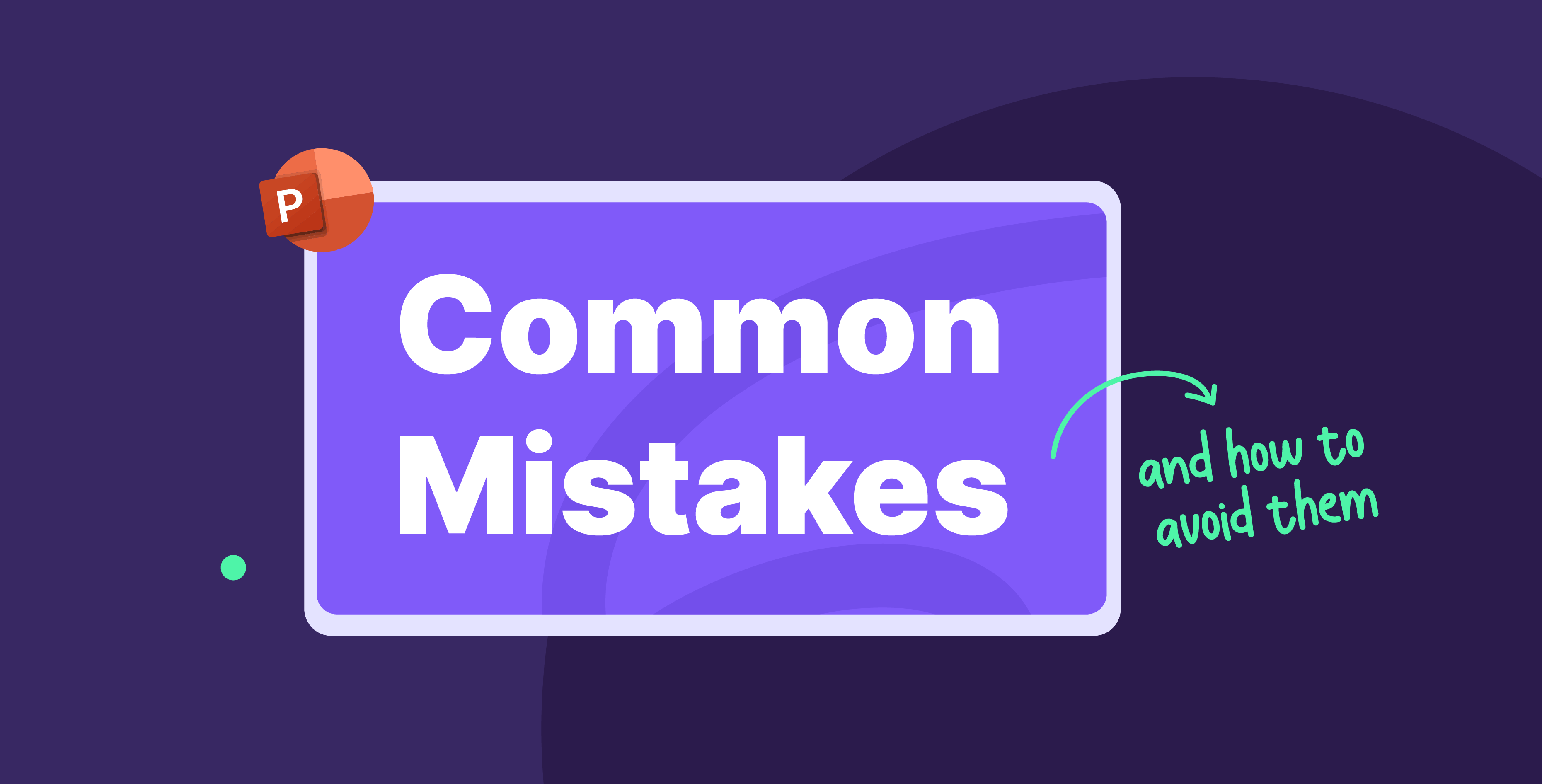15 September 2024
In the competitive business world, presentations aren’t just tools; they’re strategic assets. A well-made presentation inspires confidence in the audience, breaks down complex ideas, and even builds long-lasting relationships. However, it can undermine your message and goals, setting you back when done poorly. Luckily, you can start avoiding these pitfalls by learning more about them.
The 8 most common mistakes in business presentations:
So without further ado, here are some of the most overlooked mishaps presenters fall into.
01 Poor structure and flow
Having poor, disorganized, and inconsistent slides can derail your presentation’s message, making it harder to follow and confusing the audience. The disruption of flow and coherence can harm the overall impact of your business presentation, which is why tackling structure first is vital. Begin by creating an agenda slide outlining what you aim to cover to guarantee a logical flow between ideas. Note that there should also be consistency with the headers, formatting, and transitions, as neglecting them can make the slides feel disconnected. By thoughtfully organizing your content, you can ensure that your audience remains engaged and receptive.
02 Overuse of bullet points
While bullet points can help organize ideas, they have become a monotonous and dense way to share information, especially when relied on too heavily. When every slide has a dense list of points to remember, viewers tend to lose interest and miss key messages. Luckily, there are a variety of alternatives that we discussed in our previous blog, including splitting up points into squares, grids, lines, or icons. Breaking up bullet points in different layouts and mixing in visuals and charts help make the content more dynamic and engaging. This helps make the information more memorable, plus it presents it in a more visually appealing way.
03 Inconsistent design
When the fonts, colors, and layouts are too different from slide to slide, it contributes to the disorganization we discussed above. Inconsistent branding, which usually looks like mismatched logo sizes or incompatible colors, can weaken how your brand is perceived and harm your credibility. To avoid this, try to use a consistent design template that keeps all your design elements uniform throughout all slides for a polished and cohesive look.
04 Weak call to action (CTA)
A poorly defined call to action (CTA) leads to missed opportunities and leaves your audience unsure of where to go next. If you’re looking to close a deal, schedule a follow-up, or hope to incite a specific action, a weak CTA will undermine these goals.
Rather than saying, “Let us know if you’re interested,” which is too open-ended and vague, you could say, “Schedule a consultation with us.” This is more direct and actionable, giving your audience concrete steps to follow. Craft CTAs that make your intentions clear and aligned with your business presentation’s objectives; the audience should walk away knowing exactly what to do next.
05 Lack of context
Dumping data on your audience without context only hampers their understanding of your content. When you show off charts and statistics without explanation, they become mere visual noise. For the data to be informative, it should be tied to a narrative or a clear objective. Without context, the data and numbers lose their value and undermine your overall message. Always make sure to introduce data with a clear explanation of why it matters, what it reveals, and how it supports your ideas. By interpreting the data for your audience, you help them understand its relevance and impact, making your presentation more effective and impactful.
06 Misalignment of key messages
A common pitfall for presenters is losing sight of the big picture. By diving too deep into minor details or technical jargon, they tend to alienate their audience and dilute their main ideas. When a business presentation lacks a clear objective, it ends up being directionless and unproductive. To remedy this, every slide should be treated as a stepping stone towards the main takeaway. Keep the content focused by eliminating any extra information that doesn’t contribute to supporting the central message. This way, the audience walks away with a clear outcome in mind.
07 Poor data visualization
Misleading or inaccurate charts can become a significant distraction in a business presentation. When data is presented or visualized poorly, it usually leads to confusion, hindering understanding, or it can even undermine your message and harm your credibility. Rather, start by choosing the right type of chart for your data. Each kind of chart has its own strengths and weaknesses to keep in mind, so go for one that represents your data to avoid misinterpretations. Also, make sure that labels and legends are clear and easy to understand. And finally, simplify the content, avoid clutter and unnecessary elements that can mislead the audience and obscure the data for impactful data visualization.
08 Weak transitions between slides
Jumping abruptly from one idea to the next makes the presentation feel disjointed and confusing, leaving the audience feeling disengaged. Transitions, both in PowerPoint and in the content, play a large role in determining the presentation’s flow, which is why it’s important to be mindful of them. Effective transitions are connectors; they bridge ideas and guide the audience through the content in a way that is fluid and logical. You can create a seamless flow that keeps viewers focused and invested by using transitional phrases and subtle animations.
Conclusion
A well-crafted business presentation can shape your company’s trajectory. Avoiding common pitfalls allows you to create a presentation that relates to your audience and drives real results. We’re a presentation design agency, so we know that each slide is an opportunity to showcase your expertise and tell your story. And with the right structure, visuals, and story, you can transform your next presentation for the better.










